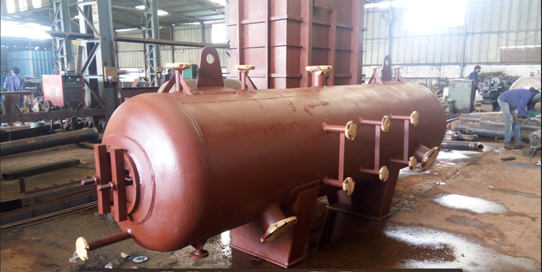Furnace Waste Heat Recovery Systems Manufacturers, Suppliers, Exporters in India, Maharashtra
Furnace Waste Heat Recovery Systems

Furnace Waste Heat Recovery System Manufacturers, Suppliers, Exporters in India, Maharashtra
Thermin Energy Systems is the Furnace Waste Heat Recovery System Manufacturers, Suppliers, Exporters in India, Maharashtra. This Furnace Waste Heat Recovery Systems in India we manufacture are perfect for industries that produce excess heat during production, such as manufacturing, chemicals, and power generation.
Furnace Waste Heat Recovery Systems Manufacturers, Furnace Waste Heat Recovery Systems Suppliers, Furnace Waste Heat Recovery Systems Exporters, Furnace Waste Heat Recovery Systems Manufacturers in India, Furnace Waste Heat Recovery Systems Suppliers in India, Furnace Waste Heat Recovery Systems Exporters in India, Furnace Waste Heat Recovery Systems Manufacturers in Maharashtra, Furnace Waste Heat Recovery Systems Suppliers in Maharashtra, Furnace Waste Heat Recovery Systems Exporters in Maharashtra
We also offer waste heat recovery systems on D.G. sets, ovens, furnaces, and Paintshops. These heat recovery systems for Furnace are designed to recover waste heat from the exhaust gases of furnaces and convert it into useful energy such as steam, hot water, or hot air.
We offer an eco-friendly and economically sound way to harness wasted thermal energy from industrial furnaces. Their versatility and positive impact on both the environment and the product line make them an attractive option for modern industrial facilities seeking sustainable solutions.
Industries we serve
- Steel
- Cement
- Manufacturing
- Glass
- Chemical
Description
A Furnace Waste Heat Recovery System is an energy-efficient technology designed to capture and utilize the waste heat generated by industrial furnaces and convert it into usable thermal energy or electricity. This sustainable approach helps companies reduce energy costs, minimize environmental impact, and enhance overall operational efficiency.
Common Types
- Heat Exchangers: Heat exchangers are the most common type of waste heat recovery systems. They transfer heat from the furnace exhaust gases to a working fluid, such as water or air, which can then be used for various industrial processes or to generate steam.
- Organic Rankine Cycle (ORC) Systems: ORC systems use organic fluids to convert waste heat into electricity. They are particularly suitable for high-temperature waste heat streams.
- Thermoelectric Generators (TEGs): TEGs utilize the Seebeck effect to directly convert temperature differences into electricity. They are efficient for low-temperature waste heat recovery.
Furnace waste heat recovery system characteristics
- Energy Efficiency: These Furnace Waste Heat Recovery Systems can significantly improve energy efficiency by utilizing heat that would otherwise be wasted.
- Environmental Benefits: They help reduce greenhouse gas emissions and the environmental footprint of industrial operations.
- Cost Savings: By using recovered heat, companies can lower their energy bills and increase cost-effectiveness.
- Customization: Systems can be tailored to suit specific industrial processes and furnace types.
- Reliability: Well-designed systems are reliable and require minimal maintenance.
How it works?
- Install heat exchangers in the furnace exhaust ducts. Recovered heat can be used for space heating, preheating combustion air, or generating steam for additional processes.
- Connect the ORC system to the furnace's exhaust. It generates electricity that can be used onsite or fed back into the grid.
- Place TEG modules in the path of the waste heat. The electricity generated can power sensors, controls, or other low-power devices.
Applications & Uses
- Steam Generation: Preheating boiler feedwater.
- Space Heating: Warming up facilities during colder months.
- Electricity Generation: Converting waste heat into electrical power.
- Process Heating: Providing heat for other industrial processes.
- Emissions Reduction: Decreasing greenhouse gas emissions by reducing the need for additional energy sources.


